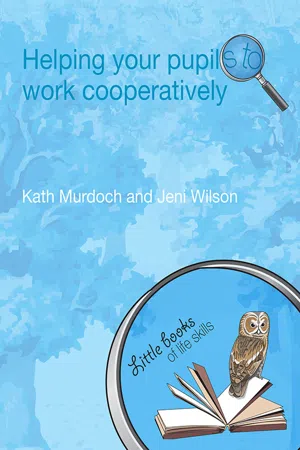
- 65 pages
- English
- ePUB (mobile friendly)
- Available on iOS & Android
Helping your Pupils to Work Cooperatively
About This Book
The classroom is one of the few places where pupils are regularly required to share, wait, take turns, compromise and work in pairs or groups. And when they are involved in the same project or task, not only are they expected to get along with others, but to get along well – well enough to communicate effectively and work together towards a shared goal or group product.
It can be a challenging way to work for some pupils, but when it is done well, it can be very rewarding. When people are working together effectively, they are aware of each person's roles and responsibilities, feel valued and respected, use a range of skills and strategies and understand the various processes and protocols required. And once the goal is reached, there is the opportunity to celebrate and share the accomplishment.
Helping your pupils to work cooperatively clearly sets out the features of cooperative working and explains how it can enhance the many skills needed for effective social interaction, healthy relationships and active citizenship. Focusing on how the teacher's role is critical to the success of cooperative working, this book shows teachers how they can develop a repertoire of strategies to help their pupils work cooperatively. Explicit instruction, modelling, feedback, intervention and strategic task selection are all described in detail and supported by examples.
The book also suggests ways to organise the classroom, provides teaching strategies and pupil activities and gives notes on assessment and record-keeping. It is complemented by several pages of proformas, which can be copied or amended for use in the classroom.
Frequently asked questions
Information
What is cooperative learning? | 1 |














Table of contents
- Cover
- Half Title
- Title Page
- Copyright Page
- Table of Contents
- 1. What is cooperative learning?
- 2. What are the benefits of cooperative learning?
- 3. The role of the teacher
- 4. Organising the classroom
- 5. Strategies and activities
- 6. Frequently asked questions (and trouble-shooting)
- 7. Tips for the teacher
- 8. Assessment and record keeping
- 9. Proformas for the classroom
- 10. Further reading